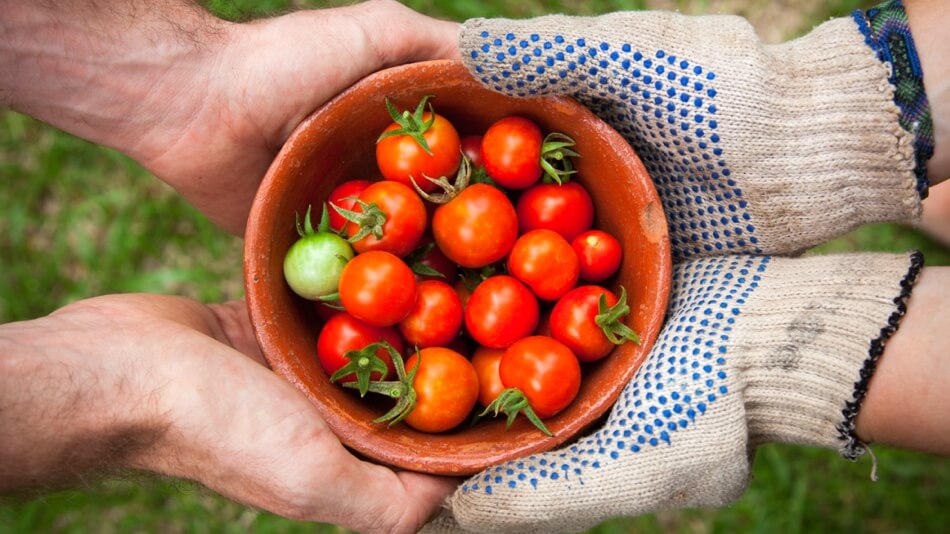TOP 5 TIPS for REDUCING FOOD WASTE at HOME
Each of us can do our part to reduce food waste at home. We’ve put together our Top 5 Tips for Reducing Food Waste at Home. Leave a comment and let us know what else you’re doing to reduce the food waste in your life!
1. Plan a menu and stick to it.
Have you ever said to yourself, “I should never go grocery shopping while I’m hungry”? Well, you were right. When you’re hungry at the store, you tend to shop with your tummy and not your brain (at least I do). I tend to buy everything that looks really good and I forget to stick to my list—assuming everything will be eaten as soon as I get home. But, sadly those extra things tend to go bad before that happens. When you plan your meals in advance, check your recipes, and make your shopping list accordingly, you will buy only what you need, and what you will use, and less will be wasted. So, muster up your stick-to-itiveness skills (and grab a snack) before you head to the store!
2. Compost it.
At AmpleHarvest.org we’re all about making fresh fruits and vegetables a part of everyone’s diet. But, when you cook with fresh foods, there will inevitably be scraps that don’t make it into the meal—corn husks, the pointy ends of fresh green beans, eggshells, and even the stalks on the broccoli that no one in my family will eat for some reason. These things should not be thrown in the trash. They will just end up in a landfill somewhere creating methane emissions that are harmful to the environment. Try composting them! Here’s some help to get you started from our friend Joe Lamp’l at Growing a Greener World TV. If you don’t have room for a compost pile, check with your local city or village hall for curbside food recycling options.
Helpful tip: Keep a small compost bin in your freezer. While you’re cooking, toss the scraps in the freezer bin and there will be no smell and you won’t have to battle fruit flies. When you’re little bin is full, then you can take it outside and dump it in your compost pile.
3. Think about food waste in real dollars.
Every time you throw a rotten tomato in the trash, remind yourself that you have just thrown away one dollar! If you like to get the big, juicy, organic heirloom tomatoes at the farmers market, add another dollar or two to that! This even works for the leftover pizza from last night’s dinner. That thing probably cost you 20 dollars and if you throw half of it away the dollars start adding up! This bring us to the next item:

Photo by Shanice Garcia on Unsplash
4. Be creative with your food.
Okay, cold pizza for breakfast is no longer considered “creative”, but it’s pretty darn good if you ask me. If you have leftovers, don’t throw them away because you just don’t feel like eating that again. Make it a challenge! Make salads and sandwiches from your leftovers. Add that ratatouille to a pot of soup or bowl of pasta. Put the meatloaf on a sandwich. Turn your stale bread into croutons. Or if you don’t have a creative bone in your body (I don’t believe you), freeze your leftovers and reheat them whenever you feel like it. The most dangerous place for a box of leftovers is in the back of a fridge. You’re going to forget about it, it’s going to go bad, it’s going to stink up your fridge, and in the end, you’re going to have to face it anyway….probably with a nose plug.
5. Just share it.
Many gardeners grow more food than they can eat and it usually ends up in the compost pile or rotting on the vine. If you have fresh food from your garden or from the store that you aren’t going to eat, you can donate it to a local food pantry. Most people think that you can only donate non-perishable food items, but every one of the over 8,000 food pantries registered at AmpleHarvest.org/find-pantry is ready and able to accept fresh food donations too. Fresh food must be uncut and of a quality that you yourself would eat. This is perfect if you have a CSA (community supported agriculture) share that comes with too much of certain foods, or ones you can’t eat. See our previous post about that here.



